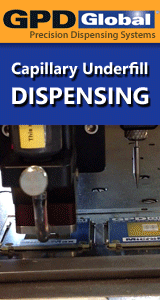Position Sensor
Position Sensors detect the position of something which means that they are referenced either to or from some fixed point or position. These types of sensors provide a “positional” feedback.
One method of determining a position, is to use either “distance”, which could be the distance between two points such a distance travelled or moved away from some fixed point, or by “rotation” (angular movement). For example, the rotation of a robot’s wheel to determine its distance travelled along the ground. Either way, Position Sensors can detect the movement of an object in a straight line using Linear Sensors or by its angular movement using Rotational Sensors.
The most commonly used “position sensors” is potentiometer because it is an inexpensive and easy to use position sensor. It has a wiper contact linked to a mechanical shaft that can be either angular (rotational) or linear (slider type) in its movement, and which causes the resistance value between the wiper/slider and the two end connections to change giving an electrical signal output that has a proportional relationship between the actual wiper position on the resistive track and its resistance value. In other words, resistance is proportional to position.
Position sensors use different sensing principles to sense the displacement of a body. Depending on the different sensing principles used for position sensors, there are six type of position sensors.
The first type of position sensor is potentiometric position sensor is operated based on the principle of resistive effect. A resistive track acts as a sensing element, and a wiper is attached to the body or part of the body whose displacement is to be measured. The wiper is also in contact with the track.
The movement of wiper changes the resistance between one end of the track and wiper. Therefore, the resistance becomes a function of the wiper position, and the change in resistance per unit change in wiper position is linear.
The conductive track can be made linear or angular depending upon the requirements. The tracks are made from carbon, resistance wire or piezoresistive material. The main advantage of this sensor is its ease of use.
The second type of position sensor is capacitive position sensor. Capacitive position sensor has two configurations. First configuration for capacitive position sensors is by changing dielectric constant, where in this configuration, body whose displacement is to be measured is connected to the dielectric material between the plates. The effective dielectric constant between the plates during the movement of the body is the resultant of the dielectric constant due to air and dielectric materials. The second configuration for capacitive position sensors is by changing overlapping area, where in this configuration, a body is connected to one of the plates, and the other plate remains fixed. The overlapping area between the plates changes with the movement of the body, and the changing overlapping area results in change in capacitance between the plates.
The third type of position sensor is magnetostrictive position sensor. Magnetostrictive position sensor primarily consists of components such as position magnet, a magnetostrictive position sensor that measures the distance between the head end of a sensing rod and the position magnet, an electronics module and waveguide.
A current pulse is transmitted down the waveguide from the electronics module. The magnetic field generated by the current pulse interacts with the magnetic field from the position magnet thereby generating sonic wave or torsional strain wave in the waveguide.
The strain wave travels towards the head end where the pickup device senses its arrival. The time difference between the generation of the interrogation pulse and the arrival of strain wave indicated the location of the position magnet.
The fourth type of position sensor is eddy current-based position sensor. When an alternating current is applied to the coil, a primary magnetic field is induced which leads to the formation of eddy currents in the electrical conducting material. Eddy currents, in turn, induce secondary field that has a coil impedance effect.
The presence or absence of the conducting material alters the secondary field and the coil impedance. Changes in the coil impedance can be used to measure the distance of the electrical conducting body.
The fifth type of position sensor is hall effect-based magnetic position sensors. In Hall-effect position sensors, a moving part is linked to a magnet housed with a sensor shaft thereby forming a Hall element. With the movement of the body or its part the magnet also moves which leads to the formation of magnetic field and hence Hall voltage. Thus, Hall voltage becomes a function of the position of the moving part.
The last type of position sensor is optical position sensor. Optical sensors are operated based on one of the two mechanisms. In the first type, light is transmitted from one end and received at the other to monitor the change in one of the characteristics such as wavelength, intensity, phase or polarization. In the second type, the transmitted light is reflected from the object and light returned towards the source is monitored.
Position Sensors/Transmitters are available through Quick Time Engineering Inc.
Pneumatic Relay
A relay is an automatic switching device which can set ON/OFF large signal lines using comparatively small signals. A pneumatic relay in 3-15 psi pneumatic signal which can control much higher signal that can control large devices larger than 15 psi pressure.
A power amplifier is needed to act on a large control valve. A pneumatic relay is a power amplifier. The relay is composed of small volume A bellows and a specially designed valve. In the nozzle pressure is transmitted to bellows A and, as the pressure increases, the bellows expand the ball down the valve B cavity, decreasing the leakage to the atmosphere and increasing the pressure Pv.
The relay is made in such as way the output pressure Pv is proportional to the signal pressure p. The airflow of the relay will be much greater than the flow rate through the nozzle, since the resistance to the air supply may be too small compared to the resistance Rr in the nozzle. A relay valve can be designed as direct acting, in which case the outlet pressure is directly proportional to the inlet pressure, or it can be reverse acting, in which case the outlet pressure is inversely proportional to the inlet pressure.
Pneumatic Relay is available through Quick Time Engineering Inc.
Quick Time Engineering Inc is an international company with offices and distribution networks in the USA, Hong Kong, Europe and Malaysia.
In its 20 years of operation since 1998, Quick Time Engineering Inc had emerged from a local engineering company with a single staff that provided solutions in factory automation to become nowadays a company that serves the Oil & Gas industries, EPC contractors, System Integrators and other industrial automation and process control companies worldwide. Customers from over 50 countries worldwide trust us with their need for process control instruments and industrial automation products.
For more information about Quick Time Engineering Inc , visit www.quicktimeonline.com or email enquiry@quicktimeonline.com






